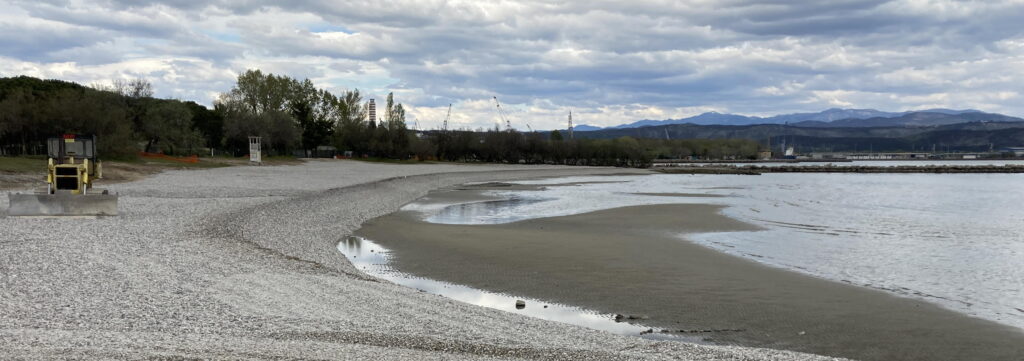
Marine protection from the beach
For most people, marine conservation is probably something that happens far out there. The TV image in our minds: actions of bold guys on rubber dinghies in daring confrontations with large fishing vessels. But many people have this image in front of their feet once a year without even realising it: the beautifully prepared summer holiday beach – the caricature of a natural seashore.
- A negative example from Italy (German only)
- Positive examples from Mallorca (German only)
- A Compromising between Coastal Conservation and Tourism: An Introductory Guide
For most people, marine conservation could start right here. Why do we have this picture in our heads of an industrially straightened beach, perhaps even filled with important sand, as it is promoted by the tourism industry? What is so ugly about a natural beach that we could not be able to handle?
The shore of a body of water is an important habitat for numerous animal and plant species and the nursery for many aquatic animals. Low and high tides extend this habitat between sea and land; the constant change between water and dryness provides additional opportunities for many lifeforms.
Interference in the vulnerable balance of habitats between water and land can cause disruptions that reach even far out to sea. Beach tourism and its constructions along the coasts can therefore be quite problematic.
Meeresschutz vom Strand aus
Für die meisten Menschen ist Meeresschutz wohl etwas, das weit draussen geschehen muss. Das Fernsehbild im Kopf: Aktionen von kühnen Typen auf Schlauchbooten in waghalsiger Konfrontation mit grossen Fischereischiffen. Viele Menschen aber haben das Bild einmal jährlich real vor ihren Füssen, ohne es zu realisieren: den schön hergerichteten Badestrand im Urlaub – die Karikatur eines natürlichen Meeresufers.
- Ein negatives Beispiel aus Italien
- Positive Beispiele von Mallorca
- Ein Leitfaden durch Probleme und Lösungen am Strand (nur Englisch)
Meeresschutz kann für die meisten Menschen genau hier beginnen. Warum haben wir ein Bild im Kopf, dessetwegen die Touristiker viele Badestrände industriell begradigen oder gar mit importiertem Sand befüllen? Was ist so hässlich an einem natürlichen Strand, das man ihn uns nicht zumutet?
Das Ufer eines Gewässers ist ein wichtiger Lebensraum für zahlreiche Tier- und Pflanzenarten und die Kinderstube für viele Wassertiere. Ebbe und Flut erweitern dieses Habitat zwischen Meer und Land; der stete Wechsel zwischen Wasser und Trockenheit bietet zusätzliche Gelegenheiten für viele Arten.
Eingriffe in das verletzliche Gleichgewicht der Habitate zwischen Wasser und Land können das Leben bis weit ins Meer hinaus stören. Zum Beispiel durch Strandtourismus samt seinen Bauten entlang der Küsten.
